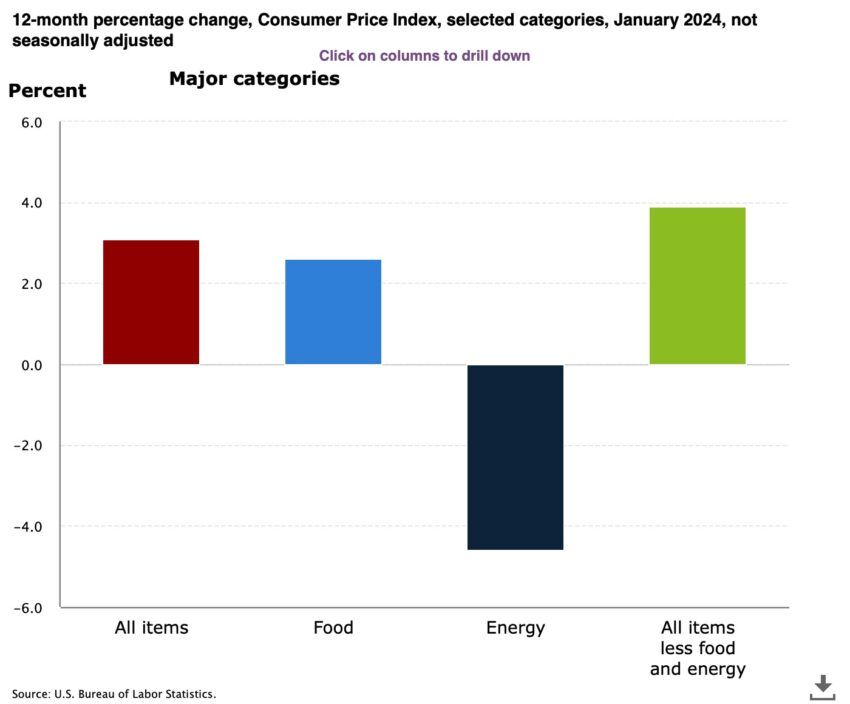As the calendar turns to March, the cryptocurrency market is about to face potentially pivotal changes. Below is a carefully curated analysis of eight impending events that could significantly impact market dynamics, highlighting the interconnections between regulatory actions, economic indicators, technological advances and legal proceedings.
Each event is a thread in the larger fabric of the cryptocurrency ecosystem, poised to weave stability or reveal volatility.
1. Federal Reserve Term Financing Program
The Federal Reserve's Bank Term Financing Program (BTFP) will stop making new loans on March 11. The BTFP was established under Section 13(3) of the Federal Reserve Act, to provide liquidity support to eligible institutions during periods of financial stress.
Its conclusion points to a shift towards normalization post-economic stress, with institutions continuing to access liquidity through the discount window. It will also resonate in the banking sector, with knock-on effects on the liquidity and stability of the cryptocurrency market.
Adjusting the interest rate on new loans so that it is no less than the interest rate on reserve balances confirms strategic alignment. It ensures that the program effectively supports its objectives until its expiration.
2. Release of February CPI data in the United States
February CPI data, due on March 12, provides a crucial measure of inflation. This data is pivotal to economic policy and investment strategies, because it influences the Federal Reserve's decisions on interest rates.

Cryptocurrency markets often react sensitively to inflation signals. This could impact the Federal Reserve's monetary policy decisions, affecting investor sentiment toward risky assets, including cryptocurrencies.
For example, high inflation numbers indicate economic uncertainty, which could lead to shifts in investment towards non-traditional assets such as cryptocurrencies.
3. Dencun upgrade for Ethereum
The Ethereum network's Cancun-Deneb upgrade, or “Dencun,” is scheduled for March 13, based on performance. It aims to enhance scalability, efficiency, and security through several Ethereum Improvement Proposals (EIPs), including EIP-4844 for raw data sharding.
This upgrade is crucial to Ethereum's roadmap towards mass scalability. It also signifies a leap in blockchain technology, making Ethereum more accessible and improving its utility across sectors like DeFi.
| series | Cost of gas fees for DEX swaps | Expected DEX swap cost after EIP-4844 |
| Ethereum mainnet | $6.38 | $6.38 |
| stark net | $1.16 | $0.12 |
| optimism | $0.38 | $0.04 |
| First decision | $0.26 | $0.03 |
| zkEVM polygon | $0.24 | $0.02 |
| ZXINK LITE | $0.21 | $0.02 |
The focus on scalability and efficiency through Layer 2 pools and innovations such as temporary data points in EIP-4844 could significantly impact Ethereum performance and user adoption.
Read more: Ethereum (ETH) Price Forecast for 2024/2025/2030
4. First meeting of FTX creditors
FTX's first meeting of creditors on March 15 aims to establish a liquidation committee as part of the formal liquidation process. This meeting is crucial for stakeholders to understand the progress of the liquidation, the claims process and the impact on the cryptocurrency market.
The composition of the liquidation committee and the information shared during the meeting could provide insight into the ramifications of FTX's collapse and future regulatory scrutiny.
5. NVIDIA GPU Technology Conference
NVIDIA's GPU Technology Conference on March 17 is scheduled to announce advances in GPU technology, including the H200 and B100 models. These innovations, which leverage TSMC's advanced nanometer processes, have significant implications for computational tasks, including cryptocurrency mining and the valuation of Proof-of-Work (PoW) cryptocurrencies.
GPU efficiency and capacity boost can impact mining economics, impacting supply and operating costs within the cryptocurrency market.
6. Federal Reserve interest rate decision
The Fed's stance on interest rates, highlighted by comments from Chairman Jerome Powell, is a barometer of the direction of economic policy. Interest rate decisions affect borrowing costs and influence investor sentiment towards risky assets, including cryptocurrencies.
The Fed's approach to managing inflation while ensuring economic growth and employment stability is critical to market confidence.
“If the economy develops broadly as expected, it will likely be appropriate to begin rolling back policy restrictions sometime this year,” Powell said. “But the economic outlook is uncertain, and continued progress toward the 2% inflation target is not guaranteed.” “.
With the Fed meeting on March 20, the financial world will be closely watching any changes in interest rates. Such decisions directly impact the investment environment, affecting the attractiveness of cryptocurrencies as alternative investments in the face of rising or falling returns on traditional assets.
7. SEC prosecution for fraud against Do Kwon
The legal action against Do Kwon, which has been delayed due to delivery challenges, underscores the regulatory scrutiny facing the cryptocurrency sector. Kwon's trial for securities fraud, among other charges, reflects the legal complexities and potential for regulatory outcomes to impact the market's perception of cryptocurrency entities.
The start of Kwon's trial on March 25 is a reminder of the regulatory risks and legal uncertainties facing the cryptocurrency industry.
8. Sentencing of Sam Bankman-Fried:
The sentencing of Sam Bankman Fried on March 28, after he was found guilty of defrauding FTX customers, represents a significant moment in the enforcement of cryptocurrency regulation. It highlights the consequences of regulatory non-compliance and governance failure, which may shape future regulatory and market dynamics.
The outcome could impact future regulatory measures, investor confidence, and operational standards of cryptocurrency exchanges and platforms.
Read more: 10 Best Crypto Apps and Exchanges for Beginners in 2024
Together, these events form a mosaic of potential market-moving factors. Each carries its weight, influencing investor sentiment, regulatory landscapes, and the technological development of the cryptocurrency market.
Disclaimer
All information contained on our website is published in good faith and for general information purposes only. Any action the reader takes upon information on our website is at his own risk.

